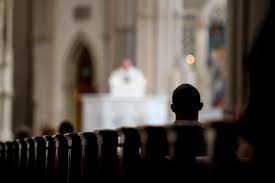
Sexual abuse within the Catholic Church has been a longstanding and deeply troubling issue that has attracted global attention. Cases of abuse, cover-ups, and the church’s responses have sparked widespread outrage and led to significant legal and societal changes. This article explores the history, impact, and ongoing challenges associated with sexual abuse within the Catholic Church.
Historical ContextEarly Allegations
The sexual abuse crisis within the Catholic Church began to gain public attention in the late 20th century. However, allegations date back much further. Some early cases were documented as far back as the 19th century, but they were often dismissed or handled discreetly by church authorities.The Boston Globe InvestigationIn 2002, the Boston Globe published a groundbreaking investigation into the sexual abuse crisis, revealing that numerous priests had been accused of sexually abusing minors. The report documented a pattern of cover-ups by church officials who transferred accused priests to different parishes rather than reporting them to law enforcement.
Global Revelations
Following the Boston Globe’s revelations, similar investigations were conducted worldwide, uncovering widespread abuse and institutional cover-ups. Countries such as Ireland, Australia, Canada, and Germany have reported significant numbers of abuse cases, highlighting the global nature of the crisis.
The Nature of Abuse
Types of AbuseSexual abuse within the Catholic Church can take various forms, including:Clerical Sexual Abuse: This involves priests or religious figures abusing minors or vulnerable individuals.Institutional Abuse: Abuse occurring in church-run institutions, such as schools and orphanages.Spiritual Abuse: Manipulation of individuals’ faith or spiritual beliefs to coerce them into silence or submission.Victim VulnerabilityVictims of abuse often include minors, but vulnerable adults and individuals within the church hierarchy have also been affected. The power dynamics within the church can exacerbate victims’ trauma, leading to long-lasting psychological and emotional effects.
Response from the Catholic Church
Initial Denials and Cover-upsFor decades, church authorities frequently denied allegations or sought to minimize their impact. Reports often indicated a pattern of transferring accused priests to different parishes without informing the local community.Implementation of PoliciesIn response to public outcry, the Catholic Church has implemented several policies aimed at preventing abuse and supporting victims. Initiatives such as the “Charter for the Protection of Children and Young People,” established by the U.S. Conference of Catholic Bishops in 2002, sought to create a safer environment for children.
Papal Involvement
Pope Francis has acknowledged the crisis and called for accountability. In 2019, he convened a summit with church leaders to address the issue, leading to the adoption of new guidelines for reporting abuse. However, many critics argue that reforms have been slow and insufficient.
Impact on Victims and Society
Psychological and Emotional EffectsSurvivors of sexual abuse often face profound psychological and emotional consequences, including depression, anxiety, PTSD, and difficulties in forming trusting relationships. Many survivors have reported feelings of betrayal, particularly given the church’s role as a moral authority.
Legal and Financial Consequences
The Catholic Church has faced numerous lawsuits related to sexual abuse, resulting in significant financial settlements. In some cases, dioceses have declared bankruptcy to manage the costs associated with claims, leading to further scrutiny of the church’s finances and practices.
Loss of Trust
The abuse scandal has significantly eroded public trust in the Catholic Church. Many parishioners have expressed disillusionment, leading to declining attendance at mass and financial contributions. Some individuals have even left the church altogether.
Ongoing Challenges
Accountability and Transparency
Despite some reforms, many survivors and advocates argue that the church has not done enough to hold abusers accountable. Calls for transparency regarding the handling of allegations and the publication of lists of credibly accused priests continue to grow.
Cultural Change within the Church
There is an ongoing need for a cultural shift within the Catholic Church, addressing the clericalism that has contributed to the abuse crisis. Advocates emphasize the importance of creating a more inclusive environment that values the voices of all members, particularly survivors.
Support for Survivors
Providing adequate support for survivors remains a critical challenge. Many organizations are working to offer resources and advocacy for those affected by abuse, but funding and awareness remain significant barriers.
The issue of sexual abuse within the Catholic Church is complex and multifaceted, involving deep-seated historical, cultural, and institutional factors. While some progress has been made in addressing the crisis, significant challenges remain. A commitment to accountability, transparency, and support for survivors is essential for rebuilding trust and preventing further abuse within the church. Continued advocacy and vigilance from survivors, communities, and reform-minded individuals are crucial in the ongoing fight for justice and healing.
Subscribe to Follow Global Trends for daily global news.
Find Out How To Make Money As A Full Time Writer/Blogger Guide.
To Advertise, Advertise Your Affiliate Links on FollowGlobalTrends.com for Just $1 Per Link Per Month!
Related Articles
protecting vulnerable followers
Belgium Catholic Church scandal
political leaders and church reform
Written By: Enyoghasi Ngozi pricillia
,

